Landscape Gardening in Kensington: Transform Your Outdoor Space
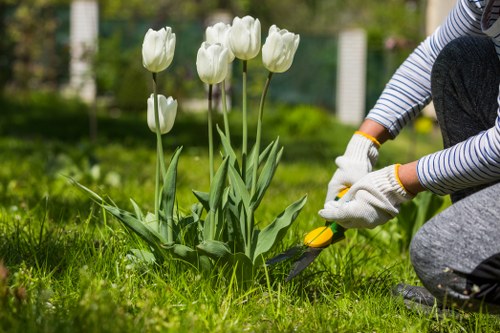
Welcome to the world of landscape gardening in Kensington, where your outdoor space can be transformed into a beautiful and functional haven. Whether you're a seasoned gardener or a beginner, Kensington offers a unique environment that can accommodate a variety of gardening styles and preferences.
In this comprehensive guide, we'll explore the essential aspects of landscape gardening specific to Kensington, providing you with the knowledge and inspiration needed to create a stunning garden that thrives in this vibrant area.
Understanding the local climate and soil conditions is crucial for successful gardening in Kensington. By selecting the right plants and implementing effective gardening techniques, you can ensure your garden remains lush and vibrant throughout the year.
Understanding the Basics of Landscape Gardening
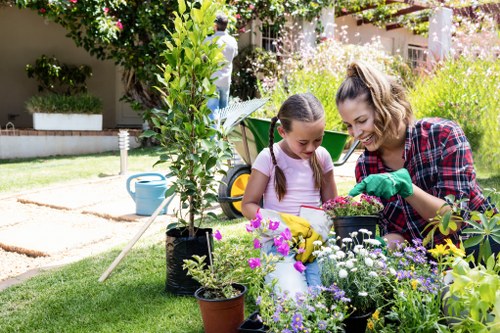
Before diving into the specifics of Kensington landscape gardening, it's important to grasp the fundamental principles that underpin successful garden design. Landscape gardening involves not only the selection of plants but also the arrangement of various elements to create a harmonious and aesthetically pleasing environment.
Key aspects include:
- Site analysis and planning
- Plant selection and placement
- Soil preparation and amendment
- Incorporation of hardscaping elements
By focusing on these core areas, you can develop a garden that not only looks stunning but also functions efficiently, providing a peaceful retreat in the heart of Kensington.
Design Principles for a Kensington Garden
Creating Balance and Harmony
Achieving balance and harmony is essential in Kensington landscape gardening. This involves arranging plants and structural elements in a way that creates a sense of equilibrium. Symmetrical designs offer a formal appearance, while asymmetrical layouts can provide a more natural and relaxed feel.
Color coordination plays a significant role in the overall aesthetic. Select a color palette that complements the surrounding architecture and natural environment, enhancing the visual appeal of your garden.
Incorporating texture and varying plant heights can add depth and interest, preventing the garden from appearing flat or monotonous.
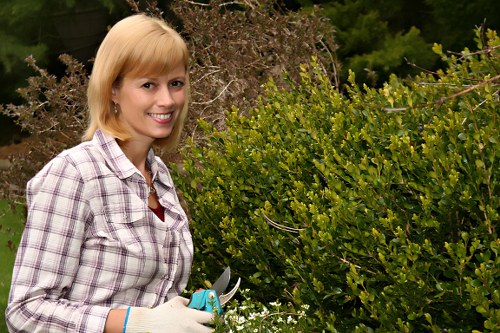
Choosing the Right Plants for Kensington's Climate
Perennials vs. Annuals
When selecting plants for your Kensington garden, it's important to consider the perennial and annual varieties. Perennials provide long-term structure and can return year after year with minimal maintenance, while annuals offer vibrant, seasonal color that can be changed annually to keep the garden fresh and exciting.
Native Plants of Kensington
Incorporating native plants is a sustainable choice that supports local biodiversity. Native species are well-adapted to Kensington's climate, requiring less water and maintenance while providing habitat for local wildlife.
Some popular native plants include:
- Lavender
- Hostas
- Roses
- Ferns
Selecting a mix of native perennials and annuals can create a dynamic and resilient garden that thrives in Kensington's unique conditions.
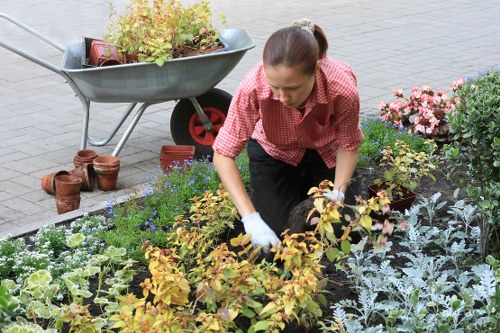
Sustainable Gardening Practices
Water Conservation Techniques
With the increasing focus on sustainability, implementing water conservation techniques is essential in landscape gardening. Drip irrigation systems, rainwater harvesting, and the use of mulch can significantly reduce water usage, promoting a more eco-friendly garden.
Additionally, selecting drought-tolerant plants can minimize the need for frequent watering, ensuring your garden remains healthy even during dry spells.
Organic Gardening Methods
Organic gardening emphasizes the use of natural fertilizers and pest control methods, avoiding synthetic chemicals that can harm the environment. Composting, crop rotation, and introducing beneficial insects are effective strategies for maintaining soil health and controlling pests organically.
By adopting sustainable practices, your Kensington garden will not only be beautiful but also environmentally responsible.
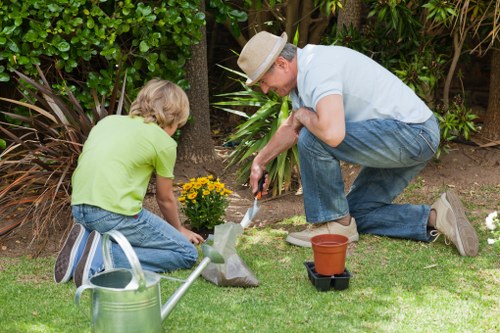
Hardscaping in Kensington Gardens
Patios and Walkways
Hardscaping elements like patios and walkways add structure and functionality to your garden. Materials such as stone, gravel, and pavers can create durable and attractive surfaces that complement your landscape design.
Consider integrating outdoor seating areas and pathways that guide visitors through different sections of the garden, enhancing both the aesthetic and practical aspects of your outdoor space.
Garden Structures
Incorporating garden structures like pergolas, arbors, and gazebos can provide shade, define spaces, and add visual interest. These structures serve as focal points and can be used to support climbing plants, creating a lush and inviting atmosphere.
Choosing materials that match the style of your home and garden ensures a cohesive and harmonious design.
Seasonal Landscape Gardening Tips
Spring Planting Strategies
Spring is the ideal time to plant new additions and revitalize your garden. Focus on planting bulbs, annuals, and perennials that will bloom throughout the season, creating a vibrant and colorful display.
Preparing the soil with organic compost and ensuring proper drainage will set the foundation for healthy plant growth.
Summer Maintenance
During the summer months, regular maintenance is crucial to keep your garden thriving. This includes watering, weeding, pruning, and monitoring for pests and diseases.
Implementing a mulching routine helps retain soil moisture and suppresses weed growth, reducing the need for frequent upkeep.
Proper maintenance ensures your Kensington garden remains lush and resilient, capable of withstanding the heat and challenges of the summer season.
Hiring Professional Landscape Gardeners in Kensington
What to Look for in a Gardener
Hiring a professional Kensington landscape gardener can elevate your garden design and maintenance. When selecting a gardener, consider factors such as experience, portfolio, and customer reviews to ensure you choose a reputable and skilled professional.
- Check for relevant certifications and memberships
- Review past projects and client testimonials
- Discuss your vision and expectations clearly
Benefits of Professional Services
Professional landscape gardeners offer expertise in plant selection, design aesthetics, and practical maintenance techniques. Their knowledge ensures your garden not only looks stunning but is also sustainable and easy to maintain.
Additionally, professionals can provide ongoing support and maintenance services, allowing you to enjoy a beautiful garden without the stress of managing it yourself.
DIY Landscape Gardening Projects
Creating a Vegetable Garden
Embarking on a DIY vegetable garden is both rewarding and practical. Start by selecting a suitable location with ample sunlight and well-draining soil. Plan your garden layout, considering the spacing and growth habits of each vegetable variety.
Incorporate raised beds or container gardening to maximize space and improve soil quality. Regularly tend to your plants by watering, weeding, and harvesting to ensure a bountiful and healthy harvest.
Building a Compost Bin
Building a compost bin is an excellent way to recycle kitchen and garden waste, creating rich compost that enriches your soil. Select a location that is easily accessible yet discreet, and construct the bin using materials like wood pallets or plastic containers.
Layer brown and green materials, maintaining proper moisture and aeration, to accelerate the decomposition process. Regularly turn the compost to promote even decomposition and prevent odors.
Composting not only reduces waste but also provides essential nutrients for your garden, enhancing soil fertility organically.
Conclusion
Landscape gardening in Kensington offers endless possibilities for creating a beautiful and sustainable outdoor space. By understanding the basics, choosing the right plants, implementing sustainable practices, and incorporating hardscaping elements, you can design a garden that reflects your style and thrives in Kensington's unique environment.
Whether you choose to work with professional landscape gardeners or embark on DIY projects, the key to success lies in careful planning, regular maintenance, and a passion for gardening.
Transform your Kensington garden today and enjoy the myriad benefits of a well-designed and maintained outdoor sanctuary.
Contact us today to begin your landscape gardening journey and turn your vision into reality.

